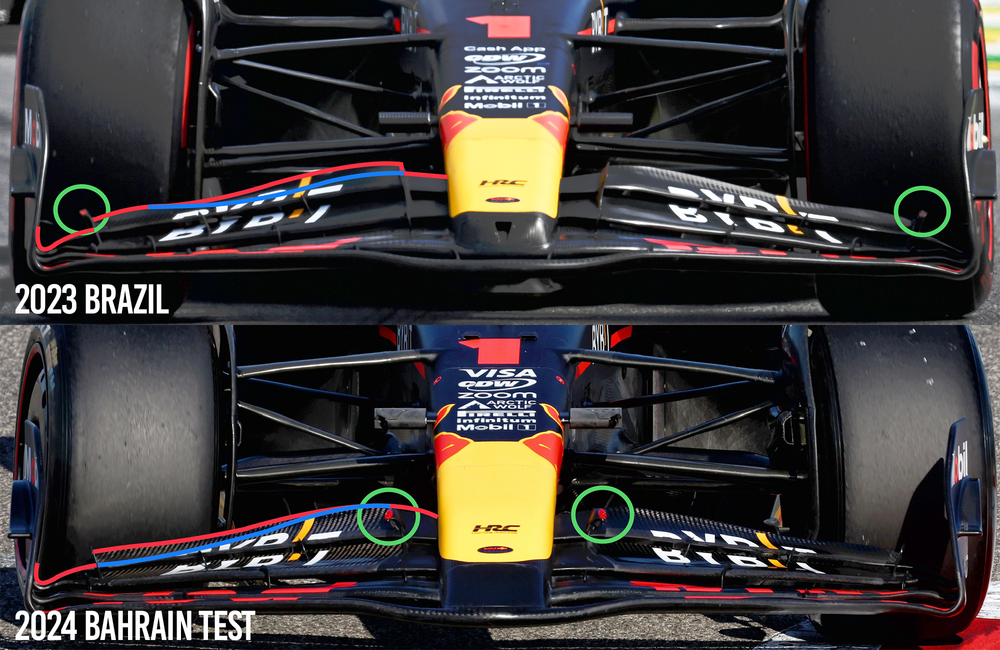Up Next

It’s always interesting to understand why Formula 1 teams add seemingly very small developments to their winter workloads.
The new Red Bull front wing is an example of what I mean.
The 2024 front wing is very similar to last year's, with the position of the flap adjuster the main change. On paper that's a small tweak but I believe it might be more significant than you would first assume.
I have highlighted both the location of the adjustor on the 2023 and 2024 cars with the green circle and the medium-speed trailing edge profile with a red highlight. The high-speed trailing edge profile is shown by the blue highlight.
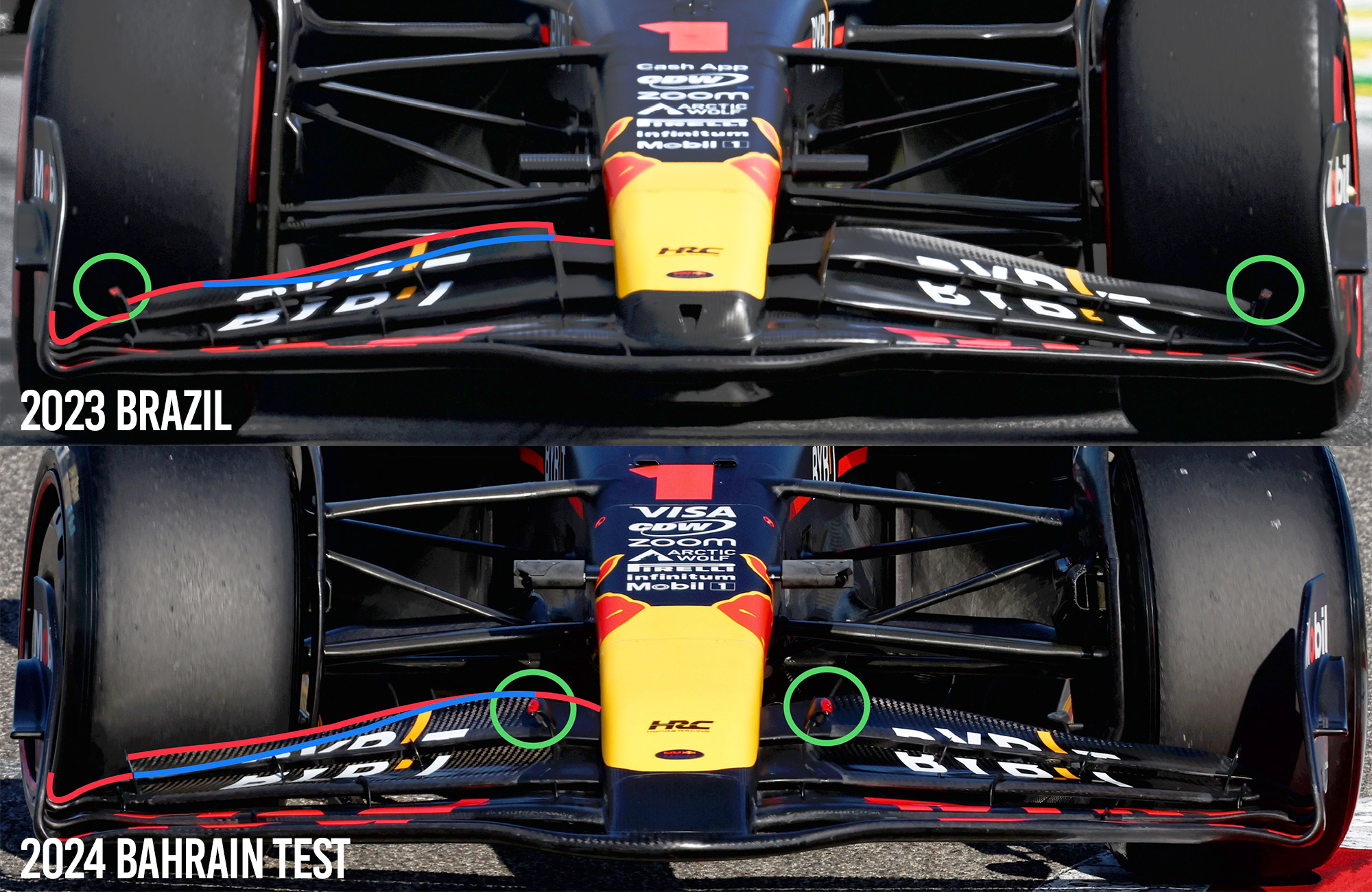
The front wing design on both cars features what I would call 'a span-wise diminishing load as it goes outboard'. The trailing edge flow is fairly uniform and Red Bull is not trying to generate much load in front of the front tyres. The span-wise load is the load that is generated all the way across a wing.
However, it is not necessarily the load that the team is optimising. Instead, it's the airflow structure coming off the trailing edge of the front wing rear flap. In reality, both go hand-in-hand. The airflow structure is critical to the performance and the consistency of the performance that is generated by the underfloor.
To quantify what I mean, the sketch below represents that span-wise load. As a simple way of looking at it, it is not dissimilar to the trailing edge profile. That's why I get confused when some teams generate a wavy trailing edge, which must play havoc with the consistency of the airflow structure.
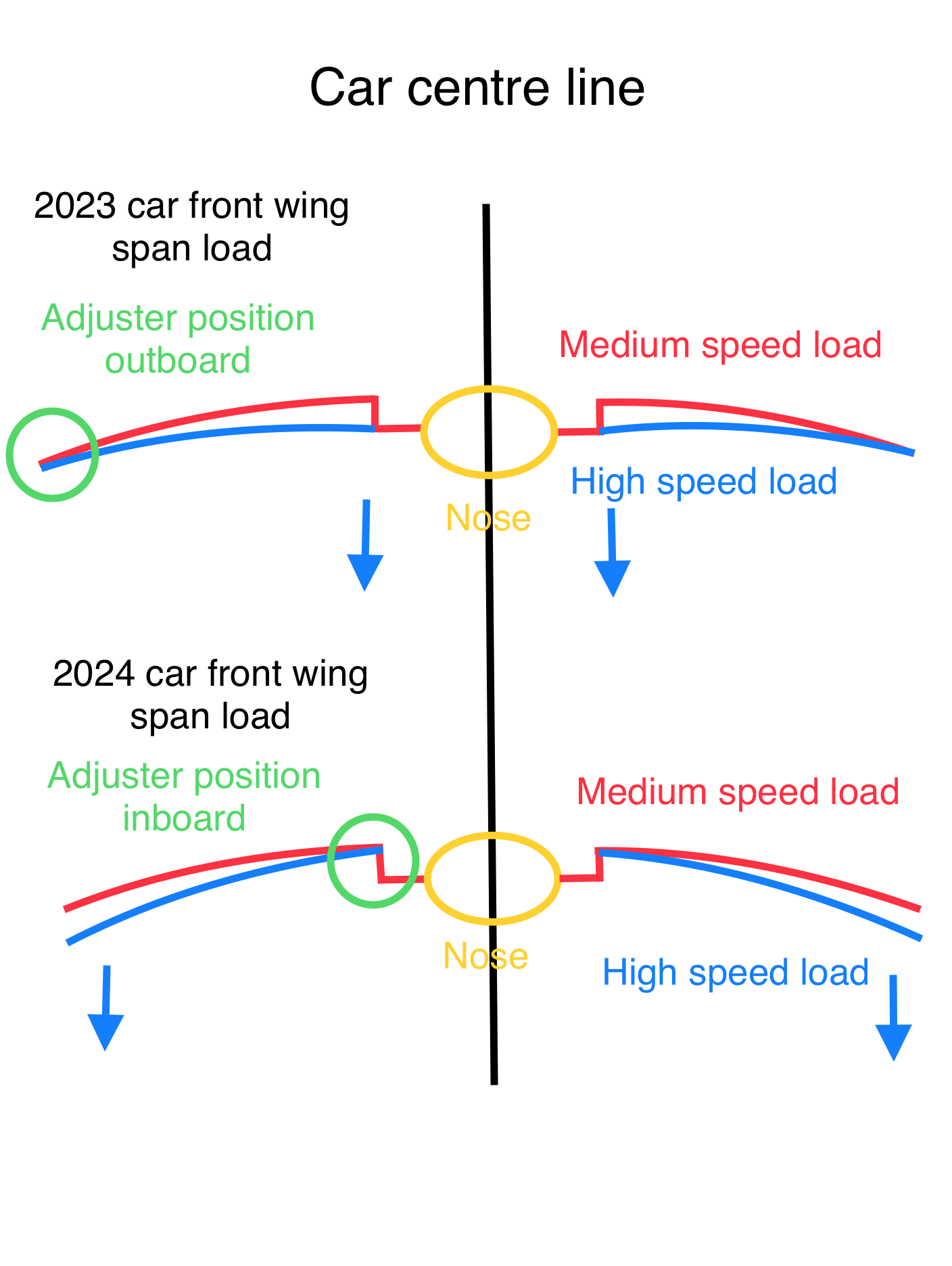
The span-wise load at medium speed of the front wings is shown by the red highlights and, at high speed, the blue highlights. The blue arrows show the position of that load reduction.
As you can see, with the placement of the flap adjuster outboard (green circle) on the 2023 car, it was the inner section of the flap that would flex downwards. This would alter the airflow structure to the leading edge of the floor in this area.
This layout would also go against the overall front wing design philosophy.
With the change of the flap adjuster on the 2024 front wing to the inboard end of the flap (green circle below), it will now be the outer end of the flap that flexes downwards.
This will mean that the airflow structure in that central area of the car will be more consistent. In turn, it will improve the consistency of the downforce generated by the underfloor.
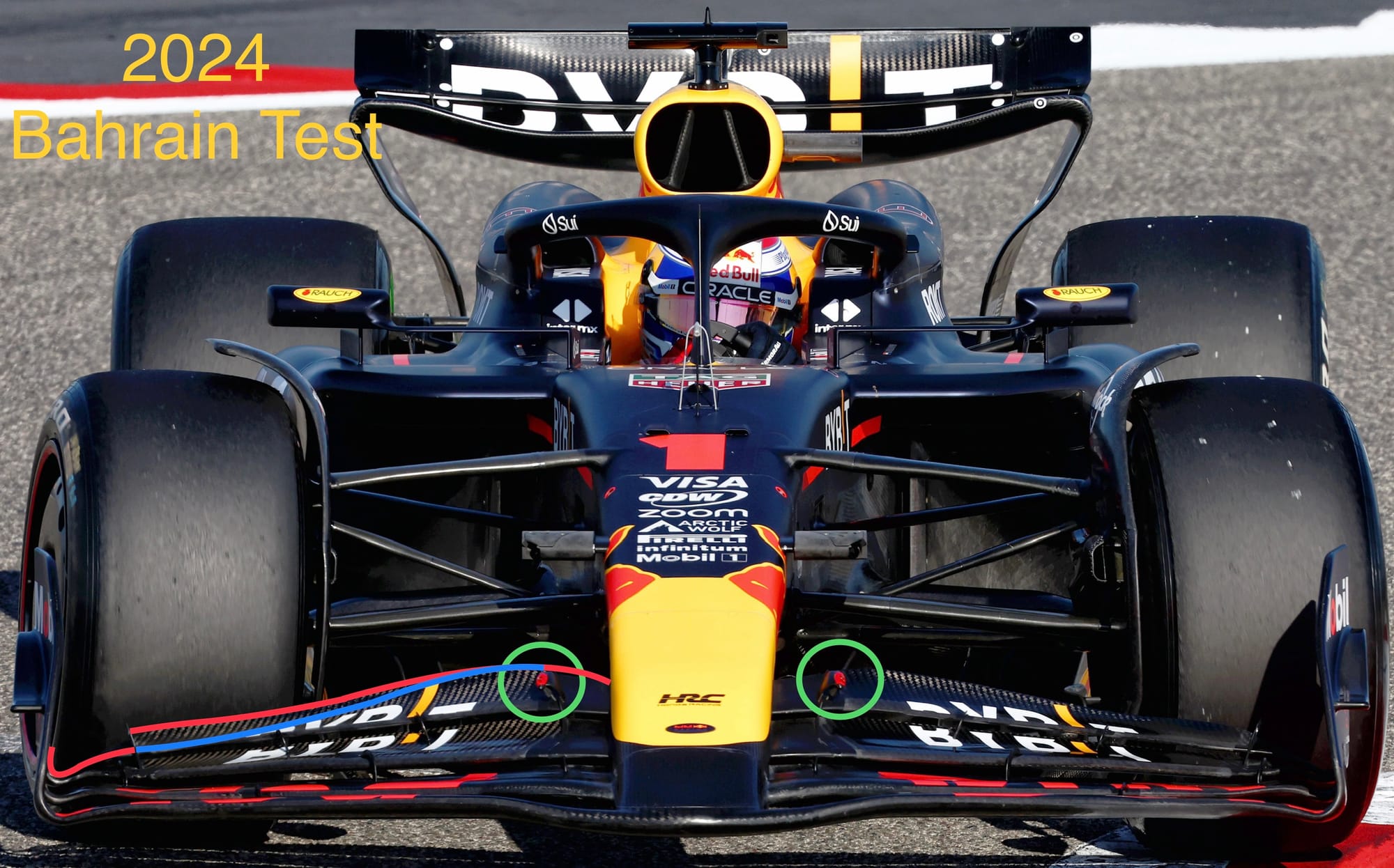
This layout would work in line with the front wing design philosophy.
As a visual illustration of what I mean about a wavy trailing edge, this is a front wing assembly Mercedes used in testing. The trailing edge is shown by a red highlight, and there is the adjuster again in the green circle.
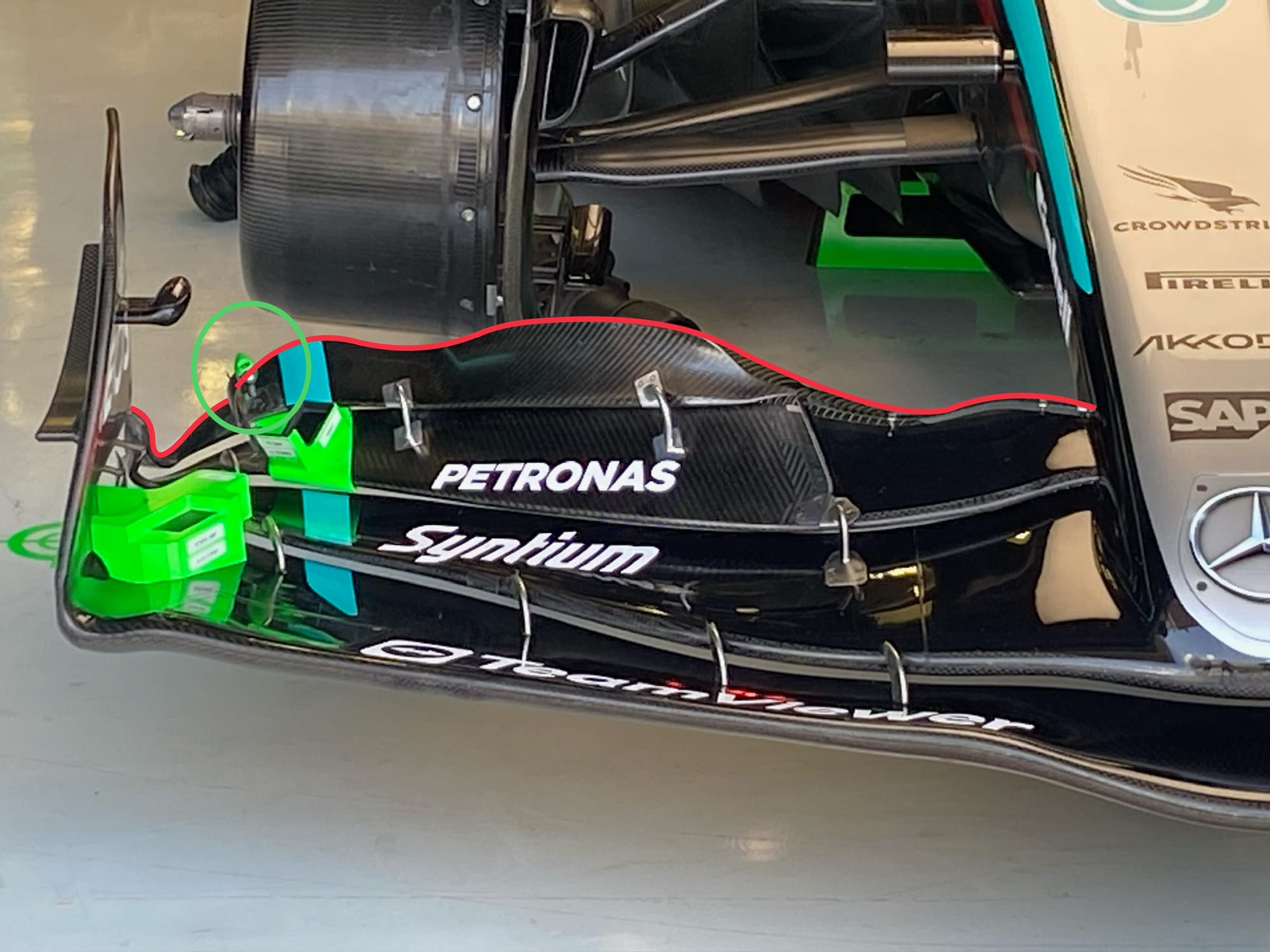
I know that the regulations don’t allow aerodynamic surface flexing, but it is accepted that everything will flex to some degree. As long as the areas that are tested meet the FIA’s stringent load versus deflection tests, you are good to go.
There are teams that allow their front wings to flex much more than Red Bull does.
So your design might as well be a positive to your overall philosophy, as opposed to a negative. That’s exactly what Red Bull is very good at.


